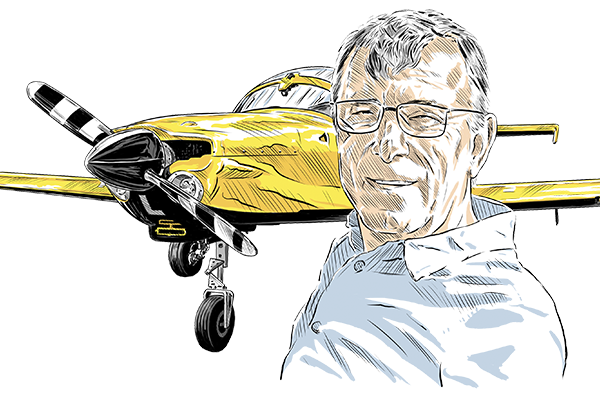Eagle strike
Circumstances: An aircraft struck a bird while cruising at 1,500ft. The bird shattered the windscreen and struck the occupants of the aircraft before coming to rest in the rear of the cabin area.
The pilot reported that loss of the windscreen reduced aircraft performance to the extent that, while flying at about 1,000ft with cruise power set, the indicated airspeed was 65kt compared to the normal 90kt. The bird was later identified as a wedge-tailed eagle, with a wingspan of almost two metres.
Comment: This incident occurred in Australia to a Cessna 152. In my experience, birds generally see light aircraft in time to take avoiding action. However, there do seem to be more birds of prey in the air these days (e.g. buzzards) which may be a bit slower to react.
If you hit a bird, it’s the startle factor that may catch you out before much else, so make sure you don’t get distracted from flying the aircraft.
Loss of air speed indicator
Circumstances: On the evening of 22 June 2020, a Royal Flying Doctor Service, Pilatus Aircraft Ltd PC-12/47E registered VH‑OWI, was conducting a positioning flight from Jandakot to Albany, Western Australia.
Approximately four minutes into the descent to Albany Airport – in instrument meteorological conditions – the pilot observed an airspeed miscompare indication on the left primary flight display (PFD).
Having assessed that a blocked pitot tube was the likely cause of the issue, the pilot elected to climb the aircraft in an attempt to get clear of cloud. During this climb the pilot’s indicated airspeed increased and exceeded the aircraft’s maximum allowable speed.
The pilot reported also receiving an overspeed alert at this time and consequently elected to discontinue the planned flight and return the aircraft to Jandakot.
When unable to obtain visual conditions, the pilot elected to descend the aircraft. During this descent the left indicated airspeed reduced to zero, however, no stall warning was activated.
At 6,000ft visual conditions were obtained, however, the turbulence at this level was severe. At this time the pilot observed a heading miscompare on both the left and right PFDs. Due to the severity of the turbulence at 6,000ft the pilot climbed the aircraft first to 8,000ft and then 10,000ft on the return to Jandakot.
The pilot reported that on approach to Jandakot all indications had returned to normal and remained that way until short final when an altitude mismatch and low airspeed warning was identified on the PFDs.
Comment: Although this incident happened to a more advanced aircraft with glass cockpit, the point to note with misreading instruments is the massive confusion that can be caused to pilots, particularly if flying IMC. It’s a difficult exercise to train for without a simulator, but worth a discussion with an FI during a training flight.
Missed the runway
Circumstances: The aircraft landed beside the strip during light rain. The pilot said that he thought that he had lined up to land on the strip to the right of markers on the left side. What he had seen were the right side markers and inadvertently landed on rough ground to the right of the marked strip.
The aircraft struck an obstacle (not identified) in the long grass and was substantially damaged. The pilot later said that he felt fatigued after a full day of flying.
Comment: Some runways may have somewhat non-standard markings on them! If in doubt, don’t land.
Two wheels on my wagon
Circumstances: On 7 January, several years ago, at 0900 Eastern Daylight Time a Piper PA28, registered VH-JXR, departed Mangalore Airport, Victoria, on a navigation training exercise. The student pilot was the only person on board.
An instructor on the ground watched the aircraft depart and observed an object trailing behind the aircraft following the take-off. During a low-level pass, the right main wheel and inner cylinder of the oleo assembly were observed to have detached from the upper cylinder and hanging off the brake line.
After a second low level pass, it was observed that the wheel had completely detached.
The instructor advised the student to hold over the airfield to burn off fuel and allow time for a plan to be formulated. After several hours and with emergency services in attendance the student was instructed to make a normal approach to Runway 36.
The aircraft touched down on the runway and slid off to the side coming to rest on the grass. The student was uninjured, however, the aircraft was substantially damaged.
The examination of the right landing gear assembly revealed that the lower torque link attachment bolt had fractured, allowing the inner cylinder to become detached from the torque link and to fall from the outer cylinder when the aircraft became airborne.
The examination indicated that the failure of the bolt was due to single-point bending fatigue due to asymmetrical loading, i.e. bending from one side.
Comment: Imagine this incident occurring to yourself during a solo PPL training flight! It looks like this was all very well handled, particularly by the student pilot who remained unflustered as the plan was formulated. If there’s no rush, don’t rush!





